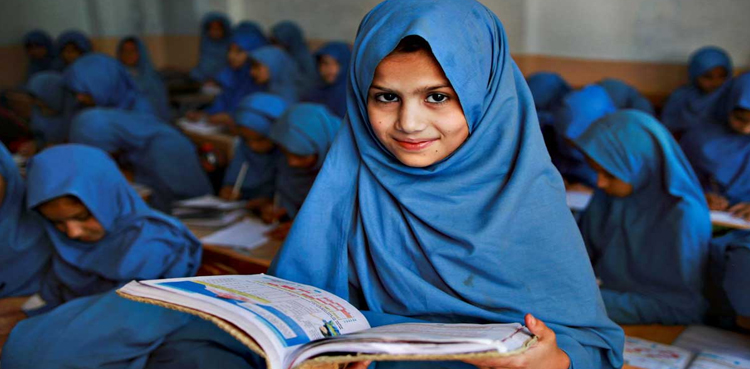
Climate shocks affected the education of 242 million children in 2024: Unicef
About one in seven students, or 242 million children in 85 countries, had their learning interrupted by extreme weather last year, according to a report released Thursday by the UN children’s agency, which lamented what it called a “overlooked” component of the climate catastrophe.
According to the research, heat waves had the greatest effect, and Catherine Russell, executive director of Unicef, cautioned that children are “more vulnerable” to harsh weather.
“Compared to adults, they heat up more quickly, sweat less effectively, and cool down more slowly,” she added in a statement.
“Children cannot concentrate in classrooms that offer no respite from sweltering heat, and they cannot get to school if the path is flooded, or if schools are washed away.”
Decades of unchecked fossil fuel use have contributed to global warming and altered weather patterns.
In 2024, global average temperatures reached all-time highs, and in recent years, they briefly crossed the crucial 1.5 degree Celsius warming threshold for the first time.
As a result, the dry periods have become drier and the rainy periods wetter, increasing heat and storm intensity and increasing the susceptibility of populations to natural disasters.
The UNICEF study stated that the 242 million number is a “conservative estimate,” pointing to data inadequacies.
The available data revealed that during the year, climatic shocks caused courses to be interrupted, vacations to be rescheduled, reopenings to be postponed, schedules to be changed, and even schools to be damaged or destroyed.
Heat waves afflicted at least 171 million children, with 118 million of those cases occurring in April alone as temperatures in Bangladesh, Cambodia, India, Thailand, and the Philippines skyrocketed.
Thousands of schools without air conditioning were shut down, putting kids at risk of hyperthermia, especially in the Philippines.
Temperature increases risk.
It also had a significant effect on September, when the school year begins in many nations.
Due to the deadly typhoon Yagi in East Asia and the Pacific, 18 countries cancelled classes.
128 million students in South Asia were impacted by climate-related school closures, making it the region most severely affected.
With 54 million youngsters impacted, India was the country most hit by heat waves. Heat waves also harmed 35 million people in Bangladesh.
With half of the world’s children—roughly one billion—living in nations at high risk of climatic and environmental shocks, the numbers are expected to increase in the years to come as temperatures continue to climb.
According to UNICEF forecasts, eight times as many children would be exposed to heat waves in 2050 as in 2000 if greenhouse gas emissions continue on their current track.
According to the estimations, 1.7 times as many would be exposed to wildfires and more than three times as many to catastrophic floods.
Beyond the short-term effects, UNICEF expressed concerns that the harm would raise the likelihood that some kids, especially females, will never attend school again.
It stated that by the age of ten, around two-thirds of children worldwide are already unable to read comprehension-level texts, and that “Climate hazards are exacerbating this reality.”
According to Russell, one of the services most commonly impacted by climatic hazards is education.
“Yet it is often overlooked in policy discussions,” she stated. “Children’s futures must be at the forefront of all climate-related plans and actions.”
Investments in classrooms that are more resilient to climate threats were demanded by UNICEF.

Content writer, educationist, teacher, researcher, social media manager, and a SEO manager from lahore. She has been working as a freelance academic and non-academic writer for more than 20 years now. She has a passion to learn new things and has a knack for writing and she combines both things to produce write ups she pours her heart out in.

